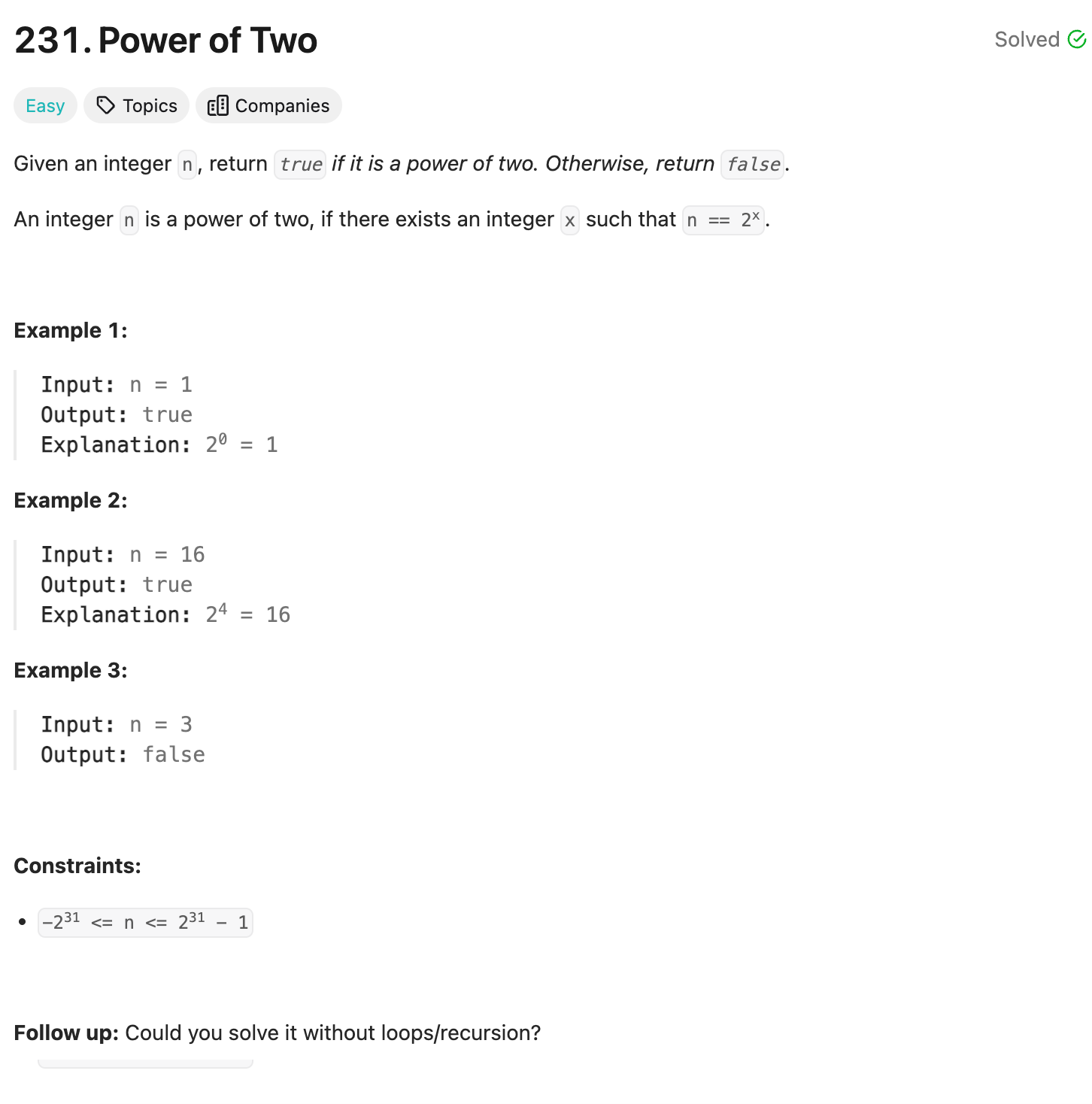Problem of The Day: Power of Two
Problem Statement
The problem is easy for while-loop or recursion, but the trick here is to learn about the bitwise operation that can run in O(1) time complexity
Brute force
class Solution:
def isPowerOfTwo(self, n: int) -> bool:
while n > 1:
n = n / 2
return n == 1
No loop/recursion with library
class Solution:
def isPowerOfTwo(self, n: int) -> bool:
if n < 0:
return False
return bin(n).count("1") == 1
Approach 1: Bitwise Operators: Get the Rightmost 1-bit
The important idea is that x & (-x) is a way to keep the rightmost 1-bit and to set all the other bits to 0. This works because of two’s complement. One can interpret this statement as the followings. Note ~
means negate the number.
-x is equivalent to ~x + 1.
This operation reverts all bits of x except the rightmost 1-bit.
Explanation:
- The expression x & (-x) isolates the rightmost 1-bit in the binary representation of x.
- In two’s complement notation, -x is equivalent to ~x + 1. So, x & (-x) essentially keeps only the rightmost 1-bit and sets all other bits to 0.
- This is because adding 1 to ~x in binary representation carries the 1-bit to the rightmost 0-bit in ~x, effectively preserving the rightmost 1-bit in x.
Detection of Power of Two:
- A power of two contains only one 1-bit in its binary representation.
- Therefore, if x & (-x) equals x, it implies that x has only one 1-bit, indicating it is a power of two.
class Solution(object):
def isPowerOfTwo(self, n):
if n == 0:
return False
return n & (-n) == n
Approach 2: Bitwise operators: Turn off the Rightmost 1-bit
Explanation:
- When you subtract 1 from a number x, it changes the rightmost 1-bit in x to 0 and sets all the lower bits to 1.
- Using the AND operator with x and (x - 1) will turn off the rightmost 1-bit because 1 & 0 results in 0. Additionally, all lower bits are set to 0 due to the subtraction.
Detection of Power of Two:
- A power of two has only one 1-bit in its binary representation.
- If x & (x - 1) equals 0, it means the rightmost 1-bit has been turned off.
- Thus, x is a power of two.
class Solution(object):
def isPowerOfTwo(self, n):
if n == 0:
return False
return n & (n - 1) == 0
